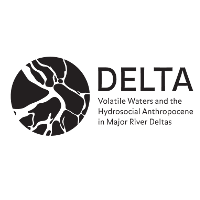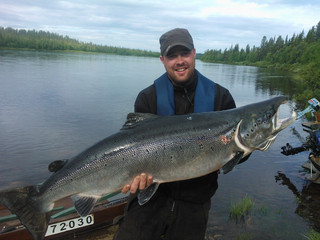Recently, I had the pleasure to participate in a roundtable discussion about “Rewilding Europe” at a conference entitled The Future of Wild Europe in Leeds, UK. This event was organised by the exciting ENHANCE, an EU funded PhD training network in the environmental humanities, with participants from Leeds, Stockholm and Munich. It was great to meet some of the ENHANCE people and learn about the ongoing research of their doctoral candidates.
The conference featured engaging plenary presentations by Jamie Lorimer, Dolly Jørgensen and Charles Foster, among others. I learned a lot about the field of rewilding, for instance the distinction between “wildness” and “wilderness,” where the former is a gradual/relational term without the absolute/externalising connotations of the latter. I also learned, however, that a lot of the rewilding discourse seems to reiterate many of the shortcomings that have characterised its purported predecessor approaches of “conservation” and “restoration,” too. Unfortunately, because rewilding is now a new field, it seems to have licence to make all these same mistakes again, including a trust in equilibrium ecosystems, an assumption that human activity necessarily equals disturbance, and a problematic combination of wild romanticism and technocratic strategizing. It was good to hear some critical voices about some of this points at the conference, too.
Preparing for the roundtable, and thinking about what I might contribute to the discussion on “rewilding Europe”, I remembered some material from my fieldwork along the Kemi River, which is the major watercourse in the Finnish province of Lapland. By many Europeans, the region as a whole is considered somewhat wild to start with, but for the people living along the river, it is, of course, first and foremost their home. This does not mean that those working in tourism would not cultivate an idea of wild Lapland among potential visitors, so that they would come and spend their holidays and money there.
Finnish Lapland has a fascinating and multifaceted history, an important aspect of which is linked to forestry. Especially the post-war reconstruction and reparations were fuelled by the accelerated industrialisation of forestry and the extension of felling areas ever further north. Transporting the timber from these remote forests to the saw- and paper-mills at the coast was realised by floating them along the river courses, many of which were tributaries to the Kemi. As Finnish forestry developed more efficiencies, the rivers were transformed, too, for instance by channelling some stretches, or removing larger rocks from rapids, so that the timber would flow downstream more smoothly. The forestry companies also built the first hydropower dams on the river in order to supply electricity to their expanding mills. One of these was constructed right on the river mouth and in a way that blocked the runs of sea trout, lamprey and – above all – salmon, which soon led to the extinction of these species in the river.
The Kemi quickly ceased to be a river in the eyes of many older inhabitants of its banks, because of its vanished rapids, because of the ubiquity of hydropower dams and especially because of the absence of salmon. In part, this may be why salmon became the keystone species when talks began about rewilding the river in the 1990s, after the end of timber floating operations. As a result, the majority of timber floating infrastructure on the river was removed, and rapids and meanders were rebuilt, often by inserting large rocks into the current. In particular the Ounas River, the largest tributary to the Kemi, was identified as a viable breeding ground and habitat for salmon – in fact, ecological studies confirmed that with the rebuilt rapids, this river fulfilled all the conditions for successful rewilding.
However, and this was perhaps my main message at the roundtable, the nature of water, rivers and fish is such that the one watercourse’s perfect suitability for wildness turned out to be inconsequential. As we all know, Atlantic salmon require access to the sea and back to the headwaters during their lifecycle. The rewilding champions have been confident that this is mostly a question of designing suitable fish ladders past the four hydropower dams downstream from the Ounas River, perhaps coupled with an appropriate schedule for discharging water though the dams’ flood gates, so that downstream travelling salmon wouldn’t have to pass through the hydropower turbines. This would establish connectivity, which – alongside keystone species reintroduction and human withdrawal from certain areas – is one of the core dimensions of rewilding.
More sceptical voices, however, have pointed out that connectivity must be understood much further, to an extent that it may jeopardise the otherwise so popular rewilding project on the Ounas River. One of their concerns pointed upstream, or inland: decades of drainage projects geared at increasing forest productivity had resulted in masses of sediment, flushed from the forests and wetlands into the gravel beds that are essential for salmon spawning and hatching. While I have heard about an impressive machine designed to clear river beds from forest sediments, I have also been told that this technology is much too complicated and costly to use repeatedly. The other concern pointed downstream: the Baltic Sea was not the same as it used to be when the first dams went up across the Kemi. Not only had open sea fishing become much more efficient, but also pollution had reached such high levels that salmon older than three years were considered unhealthy food by some people. Rewilding the Finnish Ounas River thus depended also on the Polish salmon fishing fleet and the sewage system in the Russian city of St Petersburg. Yet more concerns were raised about the mid-stream Kemi, where salmon would have to pass on their way up and down. This stretch was no longer the swiftly flowing river from the era of salmon fishing, but had been transformed into a series of hydropower reservoirs with warmer water and a grown population in pike, which were known to prey on anything that swims past them. Furthermore, this part of the river was comparatively densely populated with eager fisher people; in fact, the traditional salmon fishery that had made the Kemi River famous for its catches took mostly part here. Now, fishing salmon would have to be severely restricted in order to allow enough of them to reach the Ounas River to spawn and rewild the watercourse.
Retelling this story and pointing to some of the difficulties in rewilding the Ounas River, I do not intend to suggest that rewilding is pointless or futile. On the contrary, I have come across many ardent champions of this project along the river, which convinced me that a wilder river would also make for more pleasant human lives. Nevertheless, and perhaps closely related to this link, I think that what we can learn from the salmon and rivers in Lapland is that we cannot park wildness in a park, if it were. Wildness, precisely because of its agency beyond human control and management, necessarily spills over; it cannot be contained in clearly demarcated areas designated to rewilding, but we have to expect it in a lot of unexpected forms and corners. Therefore, when we discuss rewilding, we should keep in mind that the wild may not stick to our spatial restrictions or be limited to those forms we had hoped it would take, or affect the people and locations we had planned it would. This is what makes it wild; and this is why it is attractive to so many of us.
The point is that rewilding efforts cannot be contained. If we want to take rewilding seriously, a lot more must transform than some special wildness areas, including our hitherto safe and controlled spaces. Wildness is only wild if it may crop up in our sewage pipes or in our roof insulation, in our garden plots and around the electrical wires of our cars. This makes wildness simultaneously very political, even geopolitical as – in the case of Ounas salmon – it may involve the relations between the EU and Russia, and also very intimate as it infiltrates our senses of place, home and personal safety.
This is not to paint a gloomy picture for rewilding. But it is to underscore that finding novel ways to accommodate and live with agentive nonhuman beings means not just managed retreat, but a formidable loss of control. Which, perhaps, is fine if we learn to tread more lightly on our shared planet.

